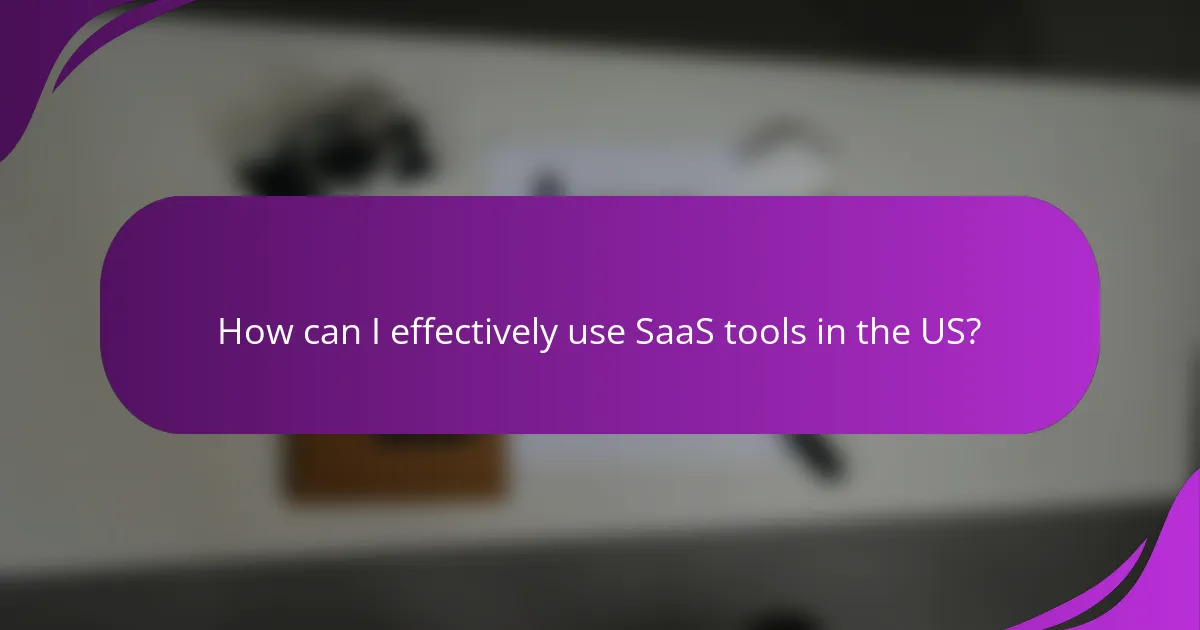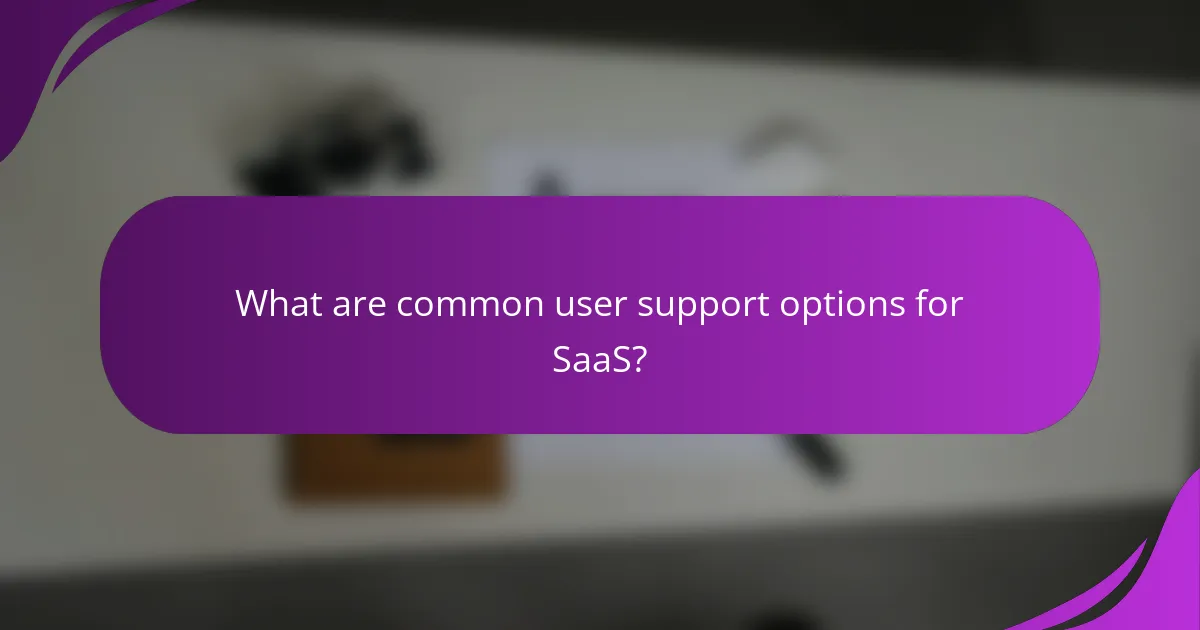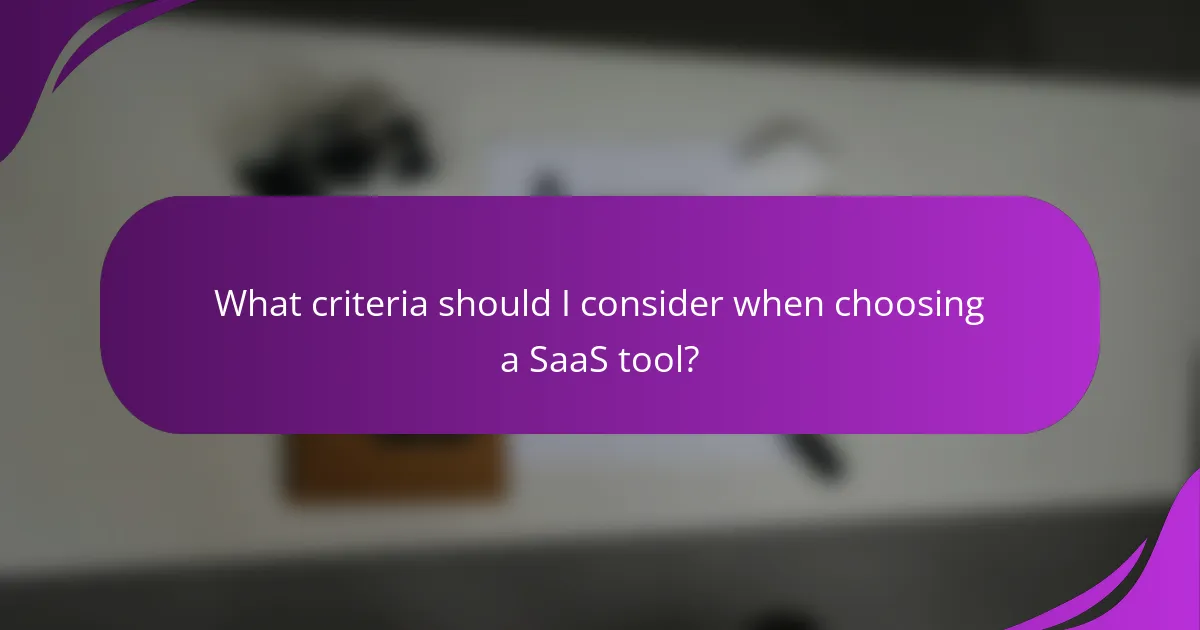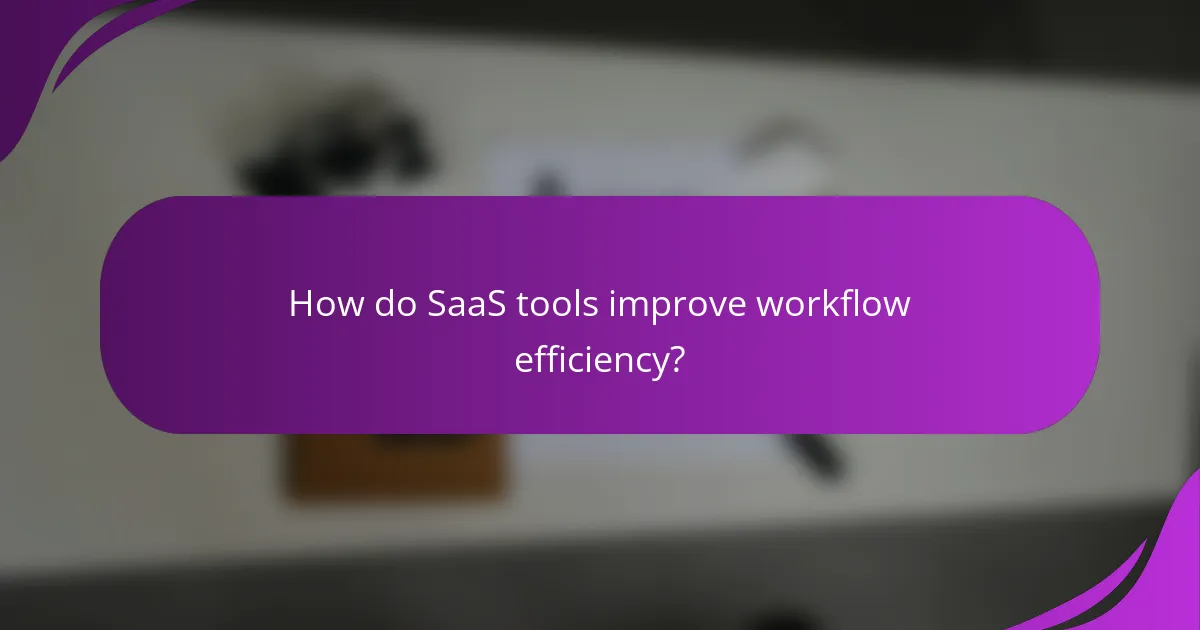Navigating SaaS platforms can greatly improve your experience, especially for beginners. By understanding the available resources and focusing on integration, customization, and analytics, you can enhance productivity and collaboration. Additionally, utilizing user support options like email, live chat, and knowledge bases can help you troubleshoot issues and maximize your software’s potential.

What are the best SaaS navigation tips for beginners?
For beginners, effective navigation in SaaS platforms can significantly enhance the user experience. Familiarizing yourself with the available resources and tools can streamline your workflow and reduce frustration.
Utilize onboarding tutorials
Onboarding tutorials are designed to guide new users through the essential features of a SaaS application. These interactive sessions often cover basic functionalities and best practices, helping you to quickly adapt to the platform.
Take advantage of these tutorials by actively engaging with them. Follow along, complete any exercises, and revisit sections as needed to reinforce your understanding of the software.
Explore user forums
User forums are valuable resources for beginners seeking advice and insights from experienced users. These platforms allow you to ask questions, share experiences, and learn from the challenges others have faced.
When exploring forums, look for threads that discuss common issues or tips specific to your SaaS application. Engaging in discussions can also help you build a network of contacts who may offer support in the future.
Leverage tooltips and help icons
Tooltips and help icons provide contextual assistance as you navigate through the software. Hovering over these elements can reveal helpful information about features or functions, making it easier to understand how to use them effectively.
Make it a habit to check these resources whenever you encounter unfamiliar terms or options. They can save you time and prevent confusion by offering immediate clarification without needing to leave the application.

How can I effectively use SaaS tools in the US?
To effectively use SaaS tools in the US, focus on integration, customization, and analytics. These elements enhance collaboration, improve visibility, and provide valuable insights, making your SaaS experience more productive.
Integrate with popular platforms like Slack
Integrating SaaS tools with platforms like Slack streamlines communication and collaboration. This allows teams to receive real-time updates and notifications directly within their preferred messaging environment.
To set up integration, check if your SaaS provider offers a Slack app or webhook options. Follow the provided documentation for configuration, ensuring that permissions are correctly set to maintain data security.
Customize dashboards for better visibility
Customizing dashboards in your SaaS tools helps you focus on the metrics that matter most to your business. Tailor your view to display key performance indicators (KPIs), project statuses, or user activities relevant to your goals.
Consider using widgets or modules that allow for drag-and-drop functionality. This flexibility enables you to rearrange elements based on priority, enhancing your ability to monitor progress effectively.
Utilize data analytics features
Leveraging data analytics features in SaaS tools can significantly enhance decision-making. These features often include visualizations, trend analysis, and reporting capabilities that help you understand your data better.
Regularly review analytics reports to identify patterns and insights. Set aside time weekly or monthly to analyze this data, adjusting your strategies based on findings to optimize performance and resource allocation.

What are common user support options for SaaS?
Common user support options for Software as a Service (SaaS) include email support, live chat assistance, and comprehensive knowledge bases. These channels help users troubleshoot issues, learn about features, and enhance their overall experience with the software.
Email support
Email support is a widely used option where users can send inquiries or issues to the service provider’s support team. This method allows for detailed explanations and attachments, making it suitable for complex problems.
Response times can vary, typically ranging from a few hours to a couple of days. Users should provide as much detail as possible to expedite the resolution process.
Live chat assistance
Live chat assistance offers real-time support, allowing users to communicate directly with a support representative. This option is ideal for quick questions or immediate troubleshooting.
Many SaaS providers implement chatbots to handle basic queries, which can enhance efficiency. However, users should be aware that more complex issues may require escalation to a human agent.
Comprehensive knowledge bases
Comprehensive knowledge bases serve as self-service resources where users can find articles, FAQs, and tutorials related to the software. These resources are beneficial for users who prefer to troubleshoot independently.
Knowledge bases often include search functionality and categorized topics, making it easier to locate relevant information. Regular updates ensure that content remains current and useful.

What criteria should I consider when choosing a SaaS tool?
When selecting a SaaS tool, consider factors such as pricing, features, integration capabilities, and customer support. These criteria will help ensure that the tool meets your specific business needs and provides a satisfactory user experience.
Evaluate pricing plans and features
Start by comparing the pricing plans of different SaaS tools to find one that fits your budget. Look for features that align with your requirements, such as user limits, storage capacity, and specific functionalities relevant to your industry.
Many SaaS providers offer tiered pricing, so assess what each tier includes. For example, a basic plan may include essential features, while higher tiers might offer advanced analytics or additional user seats. Determine if the extra cost justifies the added benefits for your organization.
Check for integration capabilities
Integration capabilities are crucial for ensuring that your SaaS tool can work seamlessly with other software you use. Investigate whether the tool supports popular integrations, such as CRM systems, marketing platforms, or project management tools.
Look for tools that offer APIs or pre-built connectors to facilitate data sharing between applications. This can save time and reduce errors, enhancing overall productivity. A good integration ecosystem can significantly improve your workflow.
Assess customer support quality
Customer support quality can greatly impact your experience with a SaaS tool. Check if the provider offers multiple support channels, such as live chat, email, or phone support, and their availability hours.
Read reviews or testimonials to gauge other users’ experiences with customer support. A responsive support team can help resolve issues quickly, minimizing downtime and ensuring you get the most out of the tool. Consider whether they provide resources like documentation, tutorials, or community forums for additional assistance.

How do SaaS tools improve workflow efficiency?
SaaS tools enhance workflow efficiency by streamlining processes and reducing manual effort. They provide automated solutions that save time and facilitate better collaboration among team members, regardless of their location.
Automate repetitive tasks
Automation of repetitive tasks is a key feature of SaaS tools, allowing users to focus on more strategic activities. For example, software can automate data entry, report generation, and email responses, which can significantly cut down on time spent on mundane tasks.
Consider using tools like Zapier or Integromat to create workflows that connect different applications. This can help eliminate the need for manual input and reduce errors, leading to smoother operations.
Facilitate remote collaboration
SaaS tools enable seamless remote collaboration by providing platforms for communication and project management. Tools like Slack or Trello allow teams to share updates, assign tasks, and track progress in real-time, regardless of their physical locations.
When implementing these tools, ensure that all team members are trained to use them effectively. Establishing clear guidelines for communication and project updates can help maintain productivity and accountability in a remote work environment.
